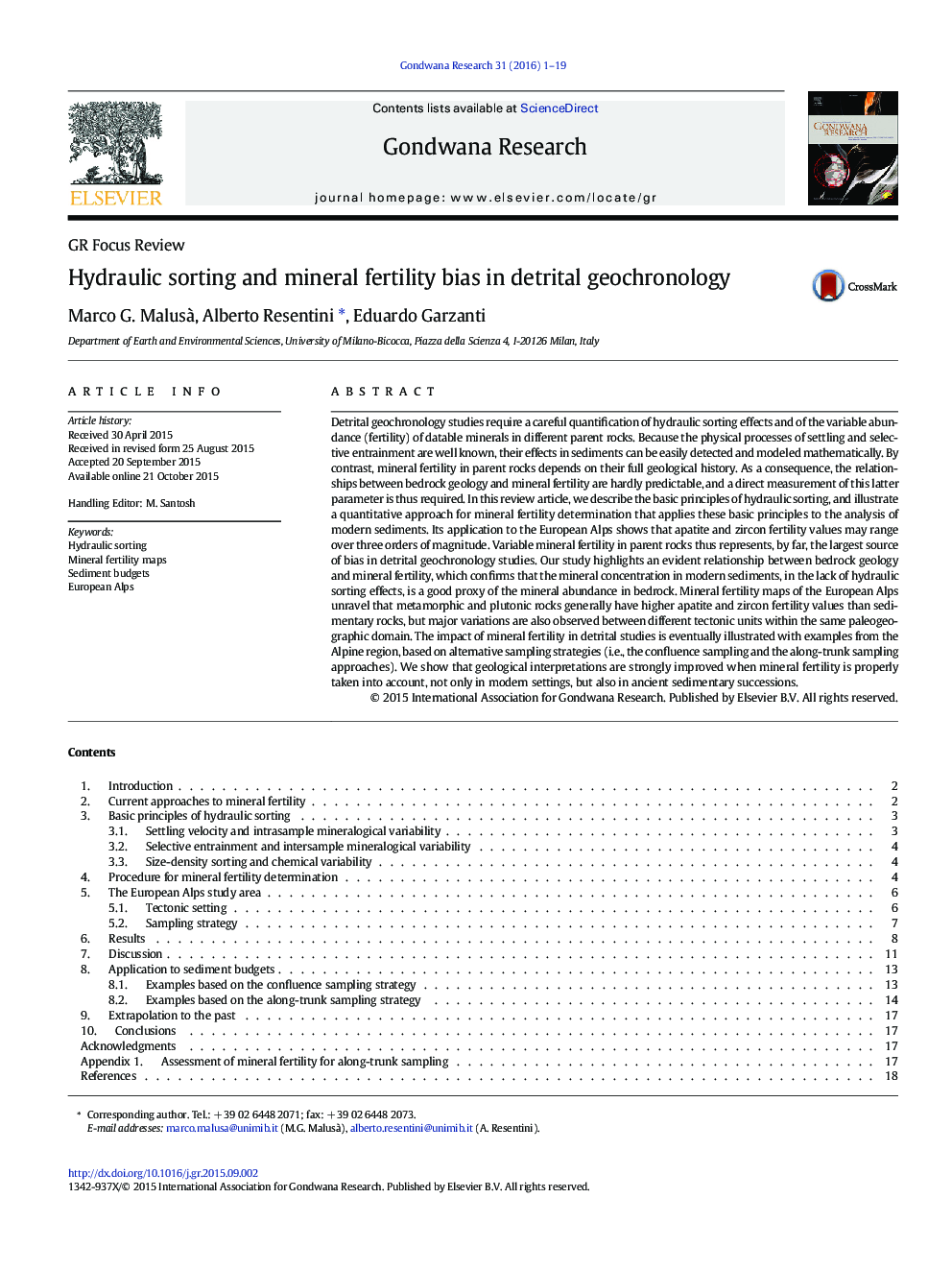| کد مقاله | کد نشریه | سال انتشار | مقاله انگلیسی | نسخه تمام متن |
|---|---|---|---|---|
| 4726670 | 1640140 | 2016 | 19 صفحه PDF | دانلود رایگان |

• Basic principles to test hydraulic sorting effects in detrital geochronology studies
• A quantitative approach for routine mineral fertility determination in source rocks
• Variable mineral fertility is the major source of bias in detrital geochronology.
Detrital geochronology studies require a careful quantification of hydraulic sorting effects and of the variable abundance (fertility) of datable minerals in different parent rocks. Because the physical processes of settling and selective entrainment are well known, their effects in sediments can be easily detected and modeled mathematically. By contrast, mineral fertility in parent rocks depends on their full geological history. As a consequence, the relationships between bedrock geology and mineral fertility are hardly predictable, and a direct measurement of this latter parameter is thus required. In this review article, we describe the basic principles of hydraulic sorting, and illustrate a quantitative approach for mineral fertility determination that applies these basic principles to the analysis of modern sediments. Its application to the European Alps shows that apatite and zircon fertility values may range over three orders of magnitude. Variable mineral fertility in parent rocks thus represents, by far, the largest source of bias in detrital geochronology studies. Our study highlights an evident relationship between bedrock geology and mineral fertility, which confirms that the mineral concentration in modern sediments, in the lack of hydraulic sorting effects, is a good proxy of the mineral abundance in bedrock. Mineral fertility maps of the European Alps unravel that metamorphic and plutonic rocks generally have higher apatite and zircon fertility values than sedimentary rocks, but major variations are also observed between different tectonic units within the same paleogeographic domain. The impact of mineral fertility in detrital studies is eventually illustrated with examples from the Alpine region, based on alternative sampling strategies (i.e., the confluence sampling and the along-trunk sampling approaches). We show that geological interpretations are strongly improved when mineral fertility is properly taken into account, not only in modern settings, but also in ancient sedimentary successions.
Figure optionsDownload as PowerPoint slide
Journal: Gondwana Research - Volume 31, March 2016, Pages 1–19